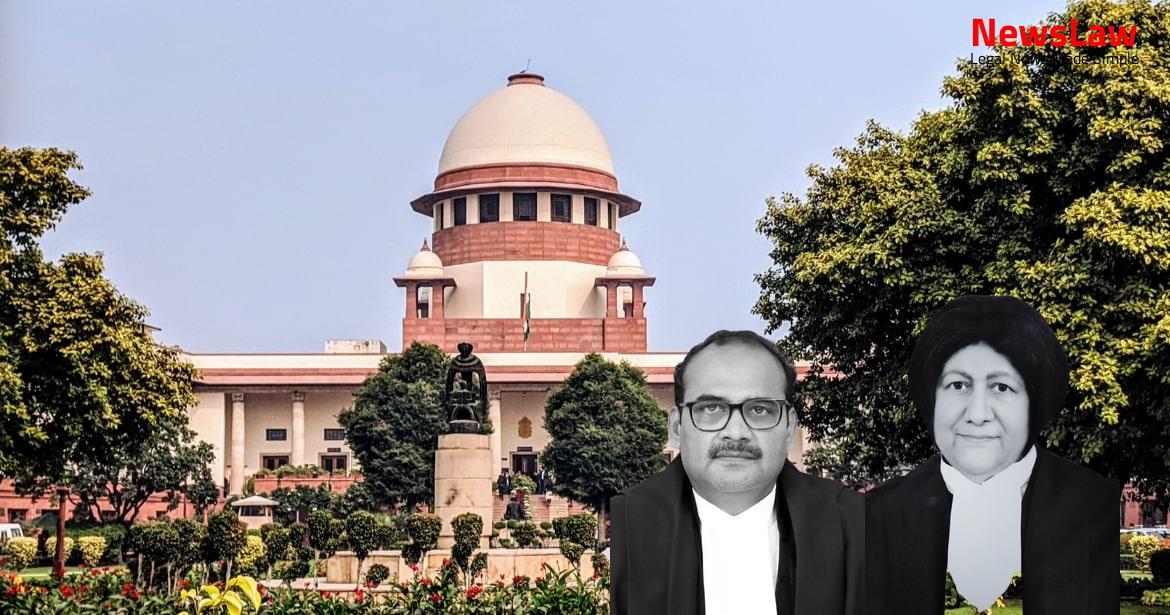The legal case delves into the intricate analysis of the terms ‘borrower’ and ‘pledgor’ in loan agreements, highlighting the court’s interpretation of these terms in financial contexts. The case sheds light on the significance of legal terminology in financial agreements and the implications of these definitions on rights and obligations of parties involved.
Facts
- Premier failed to make repayments in terms of the Loan-cum-Pledge Agreements.
- The Financial Creditor called upon Premier to repay its outstanding dues of Rs.7, 64,60,360/- on diverse dates between 28 June 2019 and 10 February 2020.
- Premier admitted its liability to pay outstanding dues to the Financial Creditor but stated genuine difficulty in repayment.
- The Financial Creditor filed a petition under Section 7 of the IBC against Doshi Holdings for the same claim based on the loan documents.
- NCLT admitted the petition for initiation of CIRP against Doshi Holdings for the same loans as Premier.
- Appellant filed an appeal in NCLAT, which was dismissed.
- Financial Creditor disbursed loans to Premier, not Doshi Holdings.
- Doshi Holdings did not utilize any part of the money disbursed by the Financial Creditor.
Also Read: Legal Analysis of Appeal Provisions in Admiralty and Commercial Court Cases
Arguments
- Mr. Vishwanathan argued that if any Member of the Bench believed that a previous opinion was incorrect, the matter should have been referred to a larger Bench to avoid differences.
- He contended that the Adjudicating/Appellate Authority’s finding that Doshi Holdings was a borrower and liable for repayment to Premier was erroneous.
- Mr. Vishwanathan pointed out that the expressions ‘borrower’ and ‘pledgor’ in the agreement had different implications and could not be equated.
- He cited a case where the court held that the definition of ‘financial debt’ under the IBC does not include a pledge.
- It was argued that since no disbursement was made to Doshi Holdings, there was no obligation for repayment under financial debt as per the IBC.
- Mr. Vishwanathan highlighted that the creation of a pledge did not amount to a guarantee or indemnity under the IBC.
- He emphasized that the execution of a promissory note does not automatically imply consideration and that the presumption can be rebutted.
- In the case of Doshi Holdings, it was stated that the Loan-cum-Pledge Agreements only created a pledge of shares, not a borrowing arrangement.
- The Adjudicating/Appellate Authority was criticized for mistakenly treating Doshi Holdings as a borrower instead of a pledgor under the agreement.
- Mr. Sakseria argued that the definition of financial debt does not require a disbursal to the Corporate Debtor, but rather a disbursal against consideration for time value of money.
- Doshi Holdings acknowledged receipt of monies disbursed under loan agreements by executing loan receipts.
- Doshi Holdings satisfies the criteria to be considered a Corporate Debtor as it is a Co-Borrower in the Loan Agreement.
- The entity considered as a Corporate Debtor should owe a debt to any person.
- Doshi Holdings issued a demand promissory note unconditionally promising repayment of the loan.
- The definition of Corporate Debtor does not necessitate that monies should have been disbursed to the Corporate Debtor.
- Various documents were referred to including Letter of Sanction, Loan-cum-Pledge Agreements, Loan Receipts, and Demand Promissory Note.
- The Appellant signed documents on behalf of Doshi Holdings as a co-borrower.
- A demand notice was issued to Doshi Holdings to repay the loan in its capacity as a co-borrower after Premier defaulted in payment.
- Both Premier and Doshi Holdings were described as borrowers in the Loan-cum-Pledge Agreements.
Also Read: Inherent Powers of NCLT in Insolvency Resolution Cases
Analysis
- The Appellate Authority’s factual finding that Doshi Holdings is a borrower under the Loan-cum-Pledge Agreement should not be interfered with in this appeal.
- A contract of guarantee is a promise to discharge the liability of a third person in case of default.
- A contract of guarantee, contract of indemnity, and pledge are distinct legal concepts.
- Doshi Holdings was identified as both a borrower and pledgor in the Loan-cum-Pledge Agreement.
- The interpretation by the Appellate Authority regarding Doshi Holdings being a borrower is plausible and not subject to interference under Section 62 of the IBC.
- The person giving the guarantee is called the surety, and the guarantee is typically for the benefit of the principal debtor and the creditor.
- The contract of indemnity involves one party promising to save the other from loss caused by certain conduct.
- Doshi Holdings received a loan from the Financial Creditor, referenced as a borrower and pledgor in the agreements.
- Approval of a resolution plan in relation to a Corporate Debtor does not discharge the guarantor of the Corporate Debtor.
- If dues are partially realised from one Corporate Debtor, the balance can be realised from the other co-borrower, but the claim cannot be recovered twice.
- Approval of resolution for one borrower does not discharge a co-borrower.
- Section 7 of the IBC allows proceedings to be initiated against both Corporate Debtors if there are two borrowers or two corporate bodies involved.
- The same amount cannot be realised from both Corporate Debtors.
Also Read: Analysis of Substantial Questions of Law in Adoption Dispute
Decision
- The appeal has been dismissed.
- No grounds were found to interfere with the impugned judgment and order of the Appellate Authority.
Case Title: MAITREYA DOSHI Vs. ANAND RATHI GLOBAL FINANCE LTD. (2022 INSC 1004)
Case Number: C.A. No.-006613 / 2021



